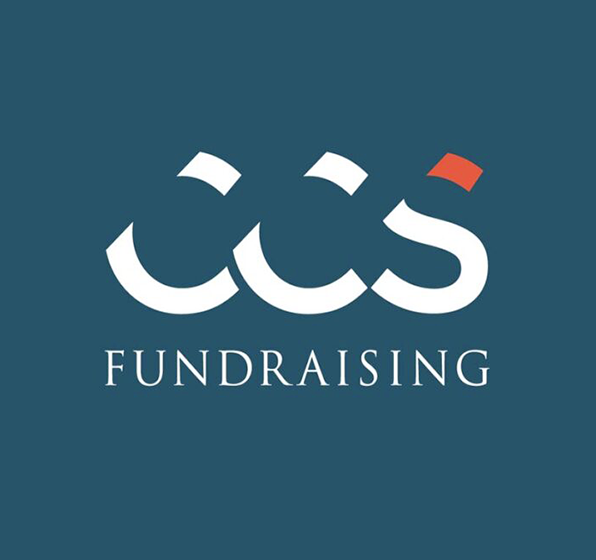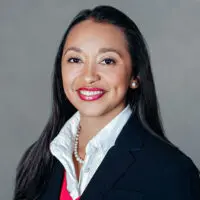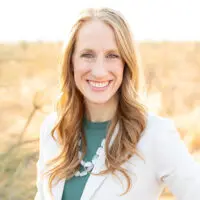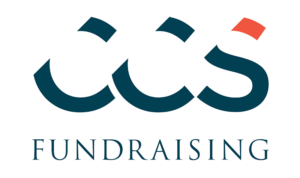Retirement assets continue to grow with $39.4 trillion held in the U.S. retirement market in 2021. By comparison, donor-advised funds (DAFs), which have garnered much publicity in recent years due to their steady increase in popularity with major donors, totaled $35 billion in 2020, three orders of magnitude less than retirement assets.
That bears repeating. There is 1,000 times more wealth in retirement assets than in DAF assets.
And yet, many fundraisers often overlook retirement assets, most of which are growing tax-free in Individual Retirement Plans and employer-based Defined Contribution Plans like 401(k)s, when discussing charitable giving options with donors.
To inspire transformational giving to nonprofits from one of the largest asset classes available, fundraisers should understand how donors might use their retirement assets for both philanthropic impact and personal financial advantage.
This article will explore:
- The importance of gift planning culture
- Favorable conditions and trends pointing towards future increases in philanthropic giving from retirement assets
- Reasons why fundraisers may be hesitant to engage donors regarding retirement assets
- Best practices for fundraisers to educate donors about the benefits of giving from retirement accounts.
Why Gift Planning Culture Is Important for All Nonprofits
A gift planning culture is an institutional commitment to donor-centric fundraising with an expanded focus on noncash assets. Fostering a culture of gift planning within a nonprofit offers myriad benefits to the organization and its donors. Importantly, it helps nonprofits create a more robust revenue pipeline in the short- and long-term. In many cases, noncash assets and deferred giving options allow donors to make their largest gifts to charity.
A planned gift is any current or future gift, made during a donor’s lifetime or at death, in consideration of a donor’s overall financial or estate planning. These gifts are holistic in scope and make use of all available gift types and both cash and noncash assets to help a donor make a personally meaningful gift.
The vast majority of household wealth in the U.S. (up to 97%) is held in noncash assets like stocks, real estate, art, businesses, and retirement assets, rather than in cash or checking accounts. Fundraisers must become more effective at transforming relationships with donors from transactional conversations about annual cash gifts to communicating the value of giving noncash assets during and after their lifetime. When this dialogue is more common between fundraisers and donors, the nonprofit can realize an elevated fulfillment of its mission in partnership with committed donors. These donors in turn can achieve their individual philanthropic and financial goals.
While gift planning is most frequently associated with helping Ultra High Net Worth (UHNW) donors diversify and maximize their philanthropic impact, it also provides new pathways for charitably inclined people at various levels of wealth by utilizing common assets like retirement plans.
Focus on Retirement Assets: Current Favorable Industry Trends
The current philanthropic landscape reflects strong market gains over the last forty years. One beneficiary of market growth is retirement assets, which have nearly tripled since 2000.
CCS is beginning to see evidence of the iceberg that is retirement account giving. Early evidence of growth in asset-based giving can be seen in the results from CCS’s Philanthropy Pulse survey. More than half of respondents expect their organization to secure more deferred gift commitments in 2022.
Promisingly, a majority of nonprofits we surveyed reported receiving gifts from noncash sources like donor-advised funds (80%), appreciated assets (61%), and bequests (57%).
CCS confirmed further evidence of the impending flood of giving via retirement assets as seen in the frequency rankings above. Gifts from retirement assets by beneficiary designation or IRA-qualified charitable distribution ranked as the fifth most popular gift type. This is higher than trusts, annuities, and life insurance. However, nearly double the number of survey respondents receive gifts from DAFs (80%) as compared to gifts from retirement plans (46%).
The frequency of gifts from retirement assets compared to DAFs in this survey highlights untapped opportunity in light of the value of these assets in the United States. While DAFs could indeed be funded with retirement assets, there remains remarkable potential for increased giving directly from retirement plans, from donors of varying capacity.
Even as CCS gained valuable insight from the nonprofits surveyed about positive shifts towards gift planning, results also showed untapped potential for nonprofit organizations to increase charitable giving from all types of noncash assets, including retirement assets.
Though the environment is promising for further diversification of donation-relevant assets, it's clear many nonprofits struggle to normalize and integrate noncash asset giving. So, how do fundraisers overcome barriers to engaging donors in gift planning conversations?
Addressing Fundraiser Hesitancy to Lean into Gift Planning
In CCS’s decades of experience, we have seen a few main reasons fundraisers are hesitant to lean into gift planning discussions with donors:
- The nonprofit’s gift planning culture is underdeveloped and under-resourced.
- The potential complexity of a planned giving strategy deters fundraisers who lack confidence in this type of fundraising.
- The supporting systems and operations, including gift acceptance policies and database utilization, often need review and refinement.
Unsurprisingly, CCS’s Philanthropy Pulse survey results confirmed gift planning is the area in which fundraisers have the lowest self-assessed expertise. Nearly two-thirds of responding organizations (65%) felt that their fundraising staff members were only somewhat or not at all knowledgeable about gift planning.
Addressing these issues is relatively simple, though not easy, just as culture change is simple to understand and difficult to implement successfully. Ultimately, nonprofits will need to invest time and money in various mechanisms to institutionalize their gift planning culture.
Consider:
- Leadership and staff training on the importance of gift planning culture and defining a role for everyone in this holistic method of fundraising
- Consistent fundraiser professional development that includes conference attendance, webinars (many of which are free), reports and books, external speakers, etc.
- A formal assessment of the nonprofit’s gift planning culture and systems to identify areas of strength, opportunity, growth, and development
- Regular opportunities for fundraisers to convene and discuss planned giving strategies for specific donors at all stages of engagement
Taking a few hours per year to educate frontline fundraisers and nonprofit leaders on the basics of securing retirement assets as charitable gifts offers a win-win for both deepening relationships with donors and capturing a greater share of wealth held in noncash assets to impact an organization’s mission. Nonprofits can leverage gift planning to help donors act in their own best financial interests, whether that be mitigating tax burdens or providing an income stream, which positions organizations as impactful partners in their donors’ lives.
Growing Gift Planning with Donors
When organizations commit to building or deepening gift planning culture, it is important to bring donors along on this journey simultaneously. The Giving USA Foundation confirmed nearly half of donors with bequests (40%) learned of such estate planning options from a nonprofit, as opposed to their financial advisor or estate planning attorney. Therefore, fundraisers have an incredible opportunity to shape how a donor views their organization relative to their financial and philanthropic potential.
The CCS Gift Planning Practice Group suggests these quick tips and actionable steps for fundraisers to consider when exploring retirement plans as a giving vehicle with their donors.
- Common retirement assets like IRAs and 401(k)s can be given to an organization during the donor’s lifetime or as part of an estate plan.
- Any person at age 70.5 can gift up to $100,000 from an IRA to a qualified charity and have that amount satisfy any Required Minimum Distributions (RMDs). This gift will not be treated as a taxable distribution.
- The new age at which individuals must begin initiating RMDs is 72. This change went into effect with the SECURE Act, signed into law in December 2019.
- Donors who inherit an IRA must take distributions, even if the donor is not yet of retirement age. Donating those funds could help the donor avoid increased income tax liability and gain a charitable tax deduction.
Actionable Steps
- Always encourage donors to consult with a tax expert when considering any proposals or gift requests to ensure the donor understands their tax liabilities and potential savings.
- Identify potential and current donors who are 70.5+ years old, are currently giving from an IRA, or who may have inherited an IRA for a targeted conversation.
- Plan messaging to donors early in the new year to let them know that your organization accepts gifts from retirement plans. This benefits the donor in two ways:
- The donor can avoid the IRS penalty if the distribution deadline was missed.
- The donor can capitalize on investment gains such as higher-yield dividend payments that generally occur at the end of Q4 (December 31st).
- Ensure your organization’s EIN and other details are easily accessible on your website.
- Build in giving from IRAs and other retirement plans into conversation talking points and proposals.
- If a donor wants to leave either a specific dollar amount or a percentage of the total assets of their retirement plan to your organization, they first need to check with their plan administrator to ensure that such a beneficiary designation is allowed.
What’s Next?
With a reasonable investment of time and strategy, many more nonprofits can strategically expand their opportunity to secure these simple yet impactful gifts of retirement assets.
On March 29, 2022, the U.S. House of Representatives passed SECURE 2.0, and it’s expected that the U.S. Senate will act on this bill in the coming months. The Senate is basing its bill on the Retirement Savings and Security Act of 2021, so between the two drafts, it is possible there will be significant changes to the funding and disbursement of retirement accounts. Of particular interest to fundraisers is the potential to increase the age of Required Minimum Distributions from age 72 to 75 over the next 10 years.
This piece has been prepared for informational purposes only and is not to be construed as legal or tax advice. Individuals should consult their lawyer, accountant, or tax advisor with regard to such matters.
Exploring gift planning?
If you or your fundraising team is looking to increase your knowledge, planning, and execution in gift planning, CCS Fundraising offers a wide range of services to meet your needs and interests.



